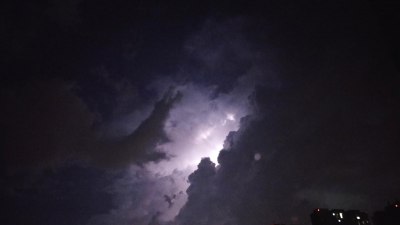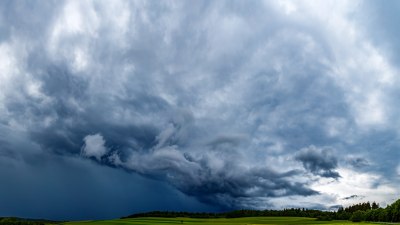Why Some Places Experience Sudden Temperature Drops After Warm Days
Explore the reasons behind sudden temperature drops after warm days, including meteorological phenomena and geographic factors.

In the world of meteorology, weather patterns can sometimes take unexpected turns. One of these intriguing phenomena is the sudden drop in temperature that can occur after a series of warm days. This article seeks to uncover the reasons behind these abrupt changes, exploring the contributing meteorological factors, geographic influences, and the science of temperature fluctuations.
Understanding Temperature Variability
Temperature variability refers to the differences in temperature that can occur over time, especially in relation to weather patterns. This variability is influenced by various factors, including atmospheric pressure, humidity levels, wind patterns, and geographical features. Understanding why sudden temperature drops occur requires an investigation into these elements.
Cold Fronts
One of the primary causes of abrupt temperature decreases is the passage of a cold front. A cold front occurs when a mass of colder air moves into an area previously dominated by warmer air. As the cold front approaches, it often forces warmer air to rise, leading to a drop in temperature and, in some cases, precipitation. The sudden change in air mass can lead to drastic temperature shifts within a matter of hours, resulting in sharp declines after a period of unseasonably warm weather.
Radiational Cooling
Another mechanism that can cause sudden temperature drops is radiational cooling. This phenomenon occurs when, under clear skies and light winds, the Earth's surface loses heat rapidly at night. After a warm day, the ground absorbs heat from the sun, and as night falls, this heat is radiated back into the atmosphere. If conditions are favorable for rapid cooling, temperatures can plunge significantly overnight.
Atmospheric Pressure Changes
Changes in atmospheric pressure can also play a notable role in temperature fluctuations. High-pressure systems are associated with clear skies and stable weather, often leading to warm temperatures during the day. However, as these systems move and are replaced by low-pressure areas, clouds and precipitation can follow, causing temperatures to drop unexpectedly. The movement of these pressure systems can happen quickly, resulting in a sharp decline in temperatures.
Geographic Influences
Geography can also affect temperature changes, contributing to sudden drops in areas influenced by topography and bodies of water. Coastal regions, for example, may experience sudden temperature changes due to the effects of maritime air masses. As warm, moist air flows in from the ocean, it can create warmer temperatures. However, if a cold air mass moves in from the land, this can conflict with the warm air, leading to sudden drops in temperature.
Mountain Effects
In mountainous areas, temperature changes can be even more pronounced. The orographic effect describes how air is forced to rise over mountains, cooling as it ascends. As warm moist air is lifted, it cools, condensing into clouds and precipitation. The descending air on the leeward side can create warm conditions, but if a cold front descends sharply over these regions, it can cause a rapid decrease in temperature.
Seasonal Changes
Seasonal transitions are also a key factor in sudden temperature changes. During the transition from winter to spring or summer to autumn, fluctuations are common. For instance, during fall, warmer days can quickly turn into colder ones as autumn approaches. The interplay between lingering warm air and incoming cool air masses can create instability and unpredictable weather patterns.
Influence of Urban Areas
Urban heat islands, which refer to areas in cities that become significantly warmer than their rural surroundings due to human activities, can also lead to sudden temperature drops. The built environment absorbs and retains heat, creating warmer microclimates. However, when cold fronts sweep into urban areas, the temperature can drop sharply as cooling occurs more rapidly than in surrounding rural regions.
Climate Change Considerations
Climate change has been affecting weather patterns globally, leading to greater temperature extremes. Warm spells can be followed by unusual cold snaps as weather systems become more erratic. Research suggests that warmer winters may cause more sporadic cold air outbreaks, with significant temperature drops occurring after periods of warmth. This variability can make understanding future temperature behaviors even more complex and unpredictable.
Mitigating the Effects
While sudden temperature drops can be disruptive, understanding these phenomena enhances our ability to prepare for and respond to extreme weather events. Meteorologists offer forecasts and alerts, allowing individuals and communities to plan accordingly. For instance, dressing in layers and monitoring weather updates can mitigate the effects of sudden cold spells.
In conclusion, the reasons behind sudden temperature drops after warm days are multifaceted, involving a combination of meteorological factors, geographic influences, and the complexities of climate change. Whether triggered by cold fronts, radiational cooling, changes in atmospheric pressure, or geographic features, these fluctuations remind us of the dynamic nature of our atmosphere. Awareness of these factors can help us understand, anticipate, and adapt to the challenges posed by variable weather conditions. As our climate continues to evolve, the importance of monitoring and studying these phenomena becomes ever more crucial.











